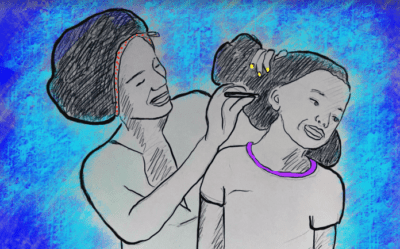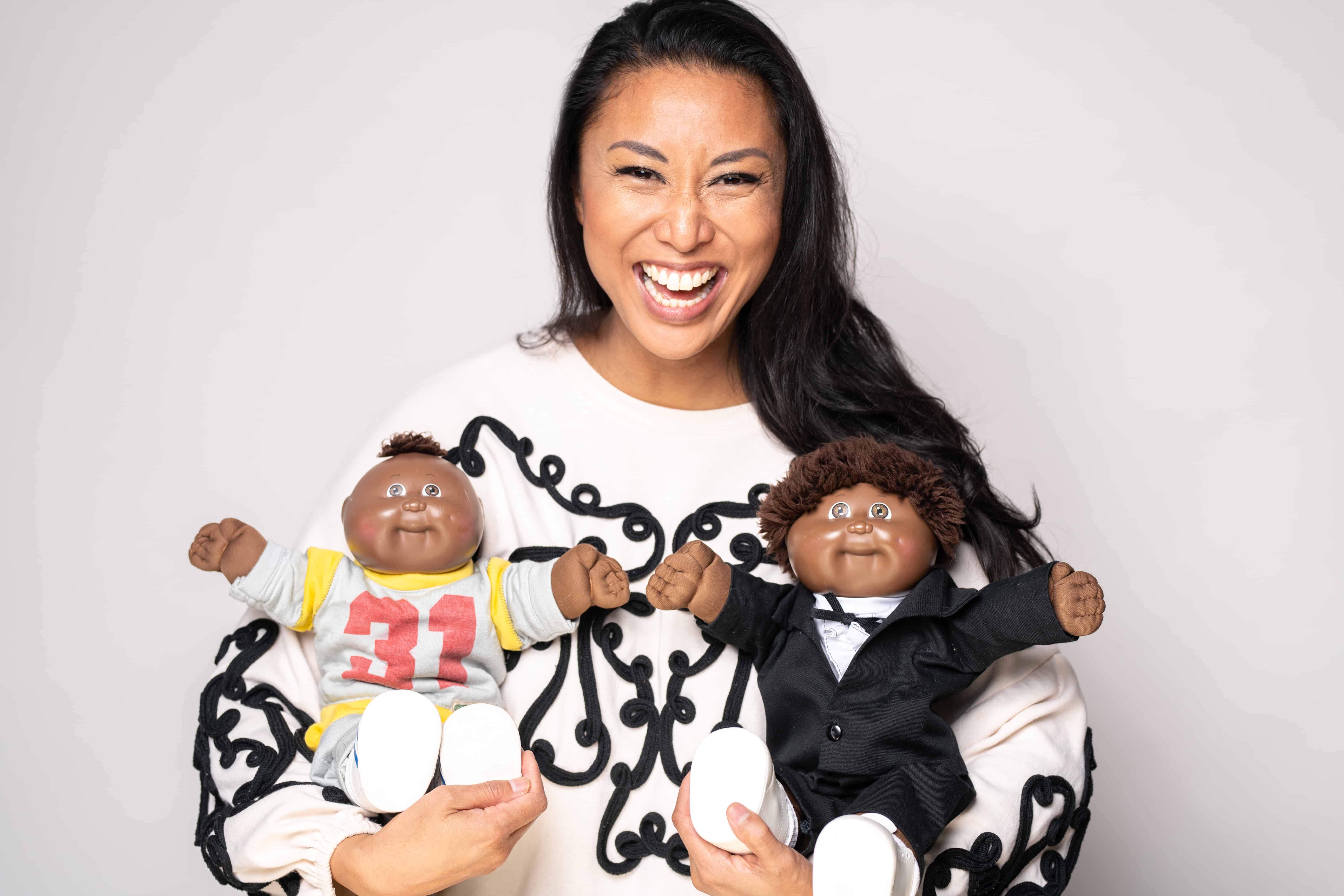Catherine Hernandez‘s latest children’s book, I Promise, is about how all LGBTQ2S families start—with the promise to love a child. With tender-hearted illustrations by Syrus Marcus Ware, the book captures the honest and intimate moments of queer parenting in all its messy glory—from building pillow forts and checking under the bed for monsters to kissing boo-boos and cuddling after a long day.
Hernandez is a queer Filipina femme, Navajo wife, radical mother, and the artistic director of b current performing arts. She’ll be presenting the book at Word on the Street Festival, coming to Harbourfront Centre on September 22. Find out more here.
We chatted with her this week.
SDTC: Where did the impetus for I Promise come from?
CH: In the LGBTQ2S community, the conversations around conception, both amongst parents and with children, are varied and vastly different from those in the cis-het community. The ways in which we became parents range from fostering to insemination to surrogacy. For children of LGBTQ2S parents, I wanted to turn the Birds and the Bees conversation on its head and showcase diverse families that start with the promise to love a child.
How has motherhood shaped your approach as an artist (and vice versa)?
I always say that before I had my daughter, I worked in the arts. After I had her, I became an artist. Telling a story to this magical human being means I have to be my most genuine self. I cannot hide behind anything. She will check me on it. She’s been checking me on my work since she was old enough to speak. She even copy edited my first manuscript of Scarborough before it won the Jim Wong Chu Award. Having her by my side makes art worth making and life worth living.

“I Promise” Illustration by Syrus Marcus Ware
What do you especially like about writing books geared to children? What is the biggest challenge with this?
As a theatre artist, I especially love Theatre for Young Audiences because youth will not let dishonesty slide. If they don’t like your words, your performance etc. you’d better believe that they will let you know their harsh opinion of you. Same goes for children’s books. I was the owner of a home daycare for six years, and I would test my pages on them to see if the story made sense and if the energy flowed. If I saw that their bodies were unable to settle, if they had several questions about the text, I knew I had to edit the manuscript.
Walk us through the process for how I Promise came to be.
This book was on my mind for years. I wanted to capture the magic of LGBTQ2S families, the various structures they can have and the various reasons why the choice to parent a child is made. Like all of my writing, I allowed it to gestate until it was willing to exit my body as text. After the success of my first children’s book, M is for Mustache: A Pride ABC Book (Flamingo Rampant Press), I knew there was an audience for the story, I just needed to be brave enough to write it.
When I attended Vivek Shraya’s launch for The Boy and the Bindi (Arsenal Pulp Press), she informed me that Arsenal was expanding its roster of published works to children’s literature. The next morning, I woke up and began writing the book. I knew I wanted the audience to be infants to around five years of age. This meant I had to keep it short. Kids this age love asking lots of questions about the illustrations, so I wanted to leave room for this and not make the text too heavy. I knew I wanted this to be the kind of book that gets read again and again, perhaps right before bed time, which meant I had to adopt a musical cadence to the text. I was honoured that Brian Lam at Arsenal Pulp Press accepted the manuscript and that Syrus Marcus Ware (who is also a LGBTQ2S parent) created the illustrations for the book. Shirarose Wilensky copy edited the manuscript. Cynara Geissler continues to hustle to get our beloved book out there.
How did your final product evolve from your initial vision?
What I loved about working with Syrus was his ability to capture what parenting actually looks like. Sure, on Instagram, people are posting pics of their naked babies inside pumpkins or videos of their toddlers saying their first words. But parenting means cutting your toenails and scrubbing them raw because your kiddo pooped on your feet. It means learning the delicate dance of chest-feeding at three in the morning. Syrus illustrated families building pillow forts and the difficult act of negotiating bedtime. I did not foresee how honest his work was going to be.
What do you hope readers take away from this story?
LGBTQ2S families can have several parents. They can have one parent. Some or none can be biological. But we all promise to love, house and feed a kid. And no matter how different we may look to the status quo, the truth is, we will deal with the same issues all parents do: Yes, they will ask big and bold questions right before bed. Yes, they will say inappropriate things in public for all to hear. Yes, we will clap for them when they learn something new. Yes, they will play with that big cardboard box sooner than they will play with the expensive toy that came in that big cardboard box.




 Follow Us On Instagram
Follow Us On Instagram
